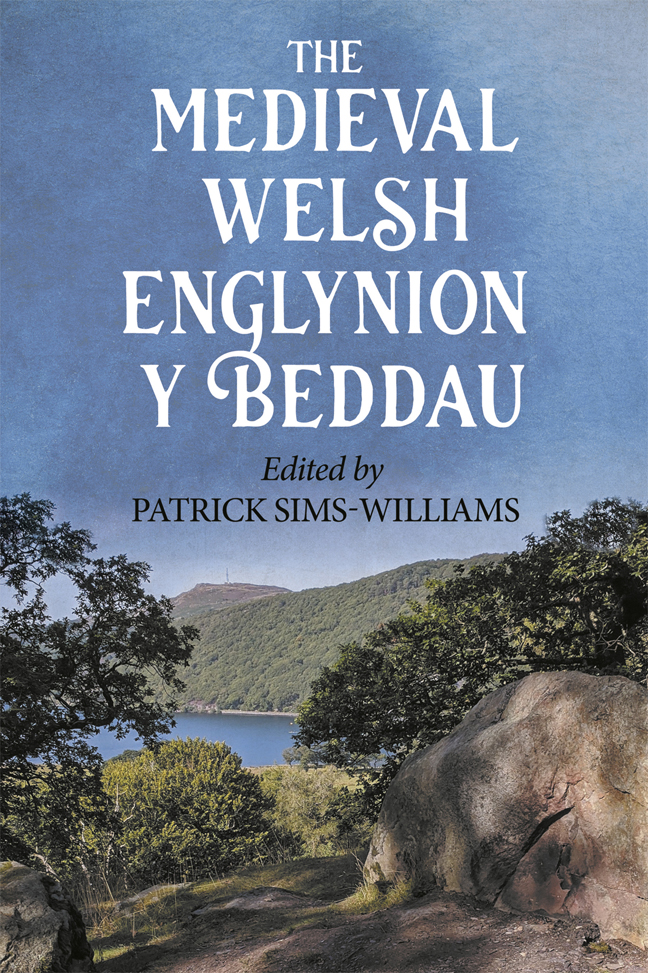 The Medieval Welsh Englynion y Beddau
The Medieval Welsh Englynion y Beddau Published online by Cambridge University Press: 02 March 2024
Although there were presumably a number of pre-Reformation copies of Englynion y Beddau in addition to the Black Book of Carmarthen, none survives, and there are no certain allusions to the text, even in the Triads. It may be significant that Gruffudd Hiraethog (d. 1564), despite his keen interest in old stories and traditions about places, never seems to draw on Englynion y Beddau.
The first extant post-medieval manuscripts are Thomas Wiliems’s possibly direct copy, in BL Add. 31055 (c. 1591–96), of William Salesbury’s now lost manuscript of Series III and Jaspar Gryffyth’s modernised copy of Series I in Llanstephan 120, made sometime between c. 1597 and 1607 as part of his transcription of the Black Book. Neither of these scholars had any evident interest in the contents, to judge merely by the scarcity of marginalia, except that Thomas Wiliems notes the name dylan beside III.8c and correctly identifies ‘Ân ap lhian’ in III.17a as ‘Merdhin Embrys’. The same is true of the texts of Series III and Series I in Peniarth 111, transcribed c. 1607 by John Jones of Gellilyfdy from a lost manuscript by Roger Morris of Coedytalwrn, Llanfair Dyffryn Clwyd, Den. (fl. 1582–97). Lack of annotation does not prove lack of interest, however, for John Jones ‘corrects’ Mabon vap Madron (III.15c) to Mabon vap Mydron in order to agree with Mabon am Mydron in the Black Book of Carmarthen poem Pa gur yv y porthaur? And some years later he would quote I.73 in connection with the alleged grave of Beli ap Benlli Gawr (see commentary). All these scribes were connected with the Denbighshire–Flintshire region, where the humanistic spirit of the Renaissance flourished, and no doubt their priority was to preserve texts rather than to comment on them. Another copyist in the same area, apparently involved in transmitting Englynion y Beddau, was Salesbury’s contemporary Richard Longford (or Langford), but his role remains unclear.
In Peniarth 98ii (not before 1617), Dr John Davies of Mallwyd, copying Series I from the Black Book on pp. 18–25 and Series III from John Jones’s Peniarth 111 text on pp. 48–50, displays a different kind of interest from John Jones. Unlike Jones, who was an exact, careful copyist, Dr Davies silently emends, improves the metre, and underlines problematic words for further consideration or for inclusion in his Dictionary.
To save this book to your Kindle, first ensure [email protected] is added to your Approved Personal Document E-mail List under your Personal Document Settings on the Manage Your Content and Devices page of your Amazon account. Then enter the ‘name’ part of your Kindle email address below. Find out more about saving to your Kindle.
Note you can select to save to either the @free.kindle.com or @kindle.com variations. ‘@free.kindle.com’ emails are free but can only be saved to your device when it is connected to wi-fi. ‘@kindle.com’ emails can be delivered even when you are not connected to wi-fi, but note that service fees apply.
Find out more about the Kindle Personal Document Service.
To save content items to your account, please confirm that you agree to abide by our usage policies. If this is the first time you use this feature, you will be asked to authorise Cambridge Core to connect with your account. Find out more about saving content to Dropbox.
To save content items to your account, please confirm that you agree to abide by our usage policies. If this is the first time you use this feature, you will be asked to authorise Cambridge Core to connect with your account. Find out more about saving content to Google Drive.